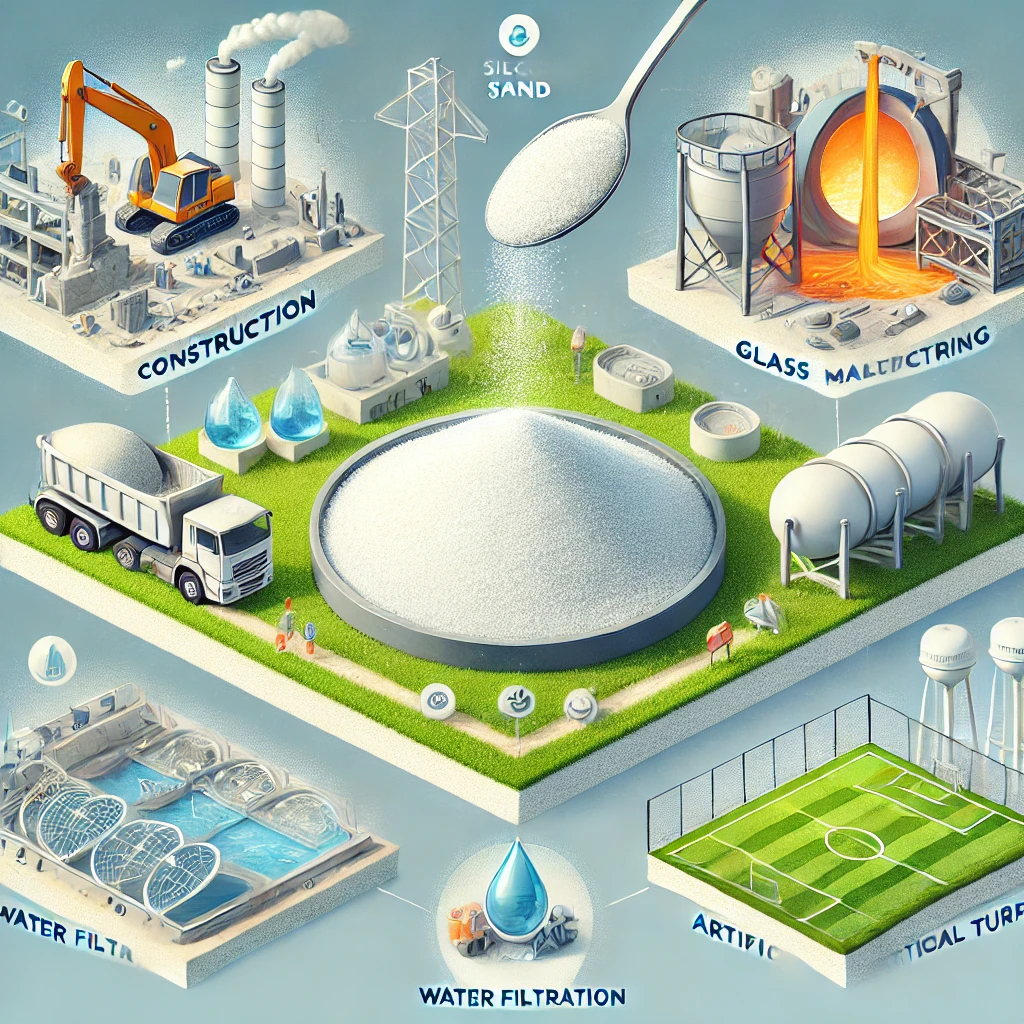Silica sand, known for its high silica (SiO₂) content and chemical purity, is a key material in the production of optical lenses. From eyeglasses and camera lenses to advanced telescopes and microscopes, silica-based glass ensures clarity, precision, and durability. This article explores how silica sand contributes to the creation of foundation lenses, its benefits, and its role in advancing optical foundation.
Why Silica Sand is Essential for Optical Lenses
Silica sand is the primary foundation in quartz glass and other silica-based materials used in optical lenses. Its unique properties, such as high transparency, low thermal expansion, and exceptional resistance to heat and chemicals, make it indispensable for producing lenses that meet rigorous optical standards.
Applications of Silica Sand in Optical Lenses
- Eyeglasses
- Silica-based glass ensures high clarity and scratch resistance for prescription lenses, sunglasses, and protective eyewear.
- Camera Lenses
- The optical precision of silica-based glass enhances image quality in professional and consumer cameras, enabling sharp focus and accurate light transmission.
- Microscopes and Telescopes
- High-purity silica sand is used to create lenses and mirrors in microscopes and telescopes, critical for scientific research and space exploration.
- Contact Lenses
- Silica derivatives are used in the coatings and treatments for contact lenses, providing comfort and durability.
- Laser Optics
- Quartz glass derived from silica sand is crucial for high-power laser systems, ensuring precision and durability in industrial and medical applications.
Benefits of Silica Sand in Optical Lenses
Silica sand offers several advantages in lens manufacturing:
- High Transparency: Provides exceptional optical clarity for accurate light transmission.
- Durability: Ensures resistance to scratches, heat, and chemicals, extending the lifespan of lenses.
- Thermal Stability: Maintains performance under varying temperatures, critical for advanced optical systems.
- Precision: Enables the production of lenses with exact specifications for diverse applications.
The Manufacturing Process
- Extraction and Refinement:
- High-quality silica sand is extracted and refined to remove impurities, achieving the purity required for optical-grade glass.
- Melting and Shaping:
- The refined silica sand is melted at high temperatures and molded into lens blanks or quartz glass.
- Polishing and Coating:
- Lens blanks are polished to achieve the desired curvature and coated with anti-reflective and protective layers.
Challenges and Innovations
Producing high-purity silica sand suitable for optical lenses requires advanced refining techniques and stringent quality control. Innovations in manufacturing are addressing these challenges, leading to:
- Eco-Friendly Processing: Reducing energy consumption and waste during production.
- Enhanced Coatings: Developing coatings that offer improved anti-reflective and scratch-resistant properties.
- Custom Optics: Leveraging 3D printing and precision shaping for bespoke optical solutions.
Sustainability in Optical Lens Production
As demand for optical lenses grows, the industry is focusing on sustainable practices. Recycling silica-based materials and adopting energy-efficient manufacturing processes are key steps in reducing environmental impact.
Conclusion
Silica sand is the backbone of optical lens production, providing the clarity, precision, and durability needed for a wide range of applications. From everyday eyeglasses to advanced telescopes, its role in enhancing vision and enabling technological advancements is unparalleled.
By understanding its properties and applications, manufacturers and consumers alike can appreciate the value of this versatile material in shaping the future of optical technology.
Explore More About Silica Sand
Stay updated on the latest trends and applications of silica sand in optical lenses and other industries. Visit our blog for expert insights and in-depth articles!
4o



